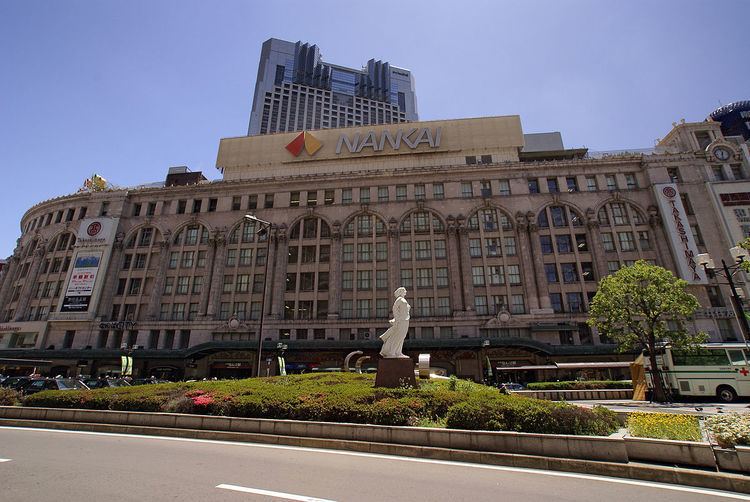Type Public KK Industry Retailing | Traded as TYO: 8233 Headquarters Japan | |
 | ||
Areas served Japan
Singapore
China
Taiwan
Thailand
Vietnam Key people Shigeru Kimoto, President Services Department stores
E-commerce Stock price 8233 (TYO) JP¥ 1,011 0.00 (0.00%)24 Mar, 3:00 PM GMT+9 - Disclaimer CEO Shigeru Kimoto (1 Feb 2014–) Founded 1829, Kyoto, Kyoto Prefecture, Japan Founders Shinshichi Iida, Iida Shinshichi Subsidiaries Takashimaya Company Ltd. Mutual Prosperity Association | ||
Takashimaya Co., Ltd. (株式会社髙島屋, Kabushiki-gaisha Takashimaya) is a Japanese company that operates a department store chain carrying a wide array of products, ranging from wedding dresses and other apparel to electronics and flatware.
Contents
Takashimaya was listed at #1197 on the Forbes Global 2000 list for 2006.
Takashimaya is a member of the Mitsubishi UFJ Financial Group (MUFJ) keiretsu.
History
The first Takashimaya store was opened in Kyoto in 1831 as a sole proprietorship owned by Shinshichi Iida, a merchant from present-day Fukui Prefecture. The original store in Kyoto was only 3.6 square meters in area and specialized in selling gofuku (formal kimono). A second Kyoto store opened in 1893, followed by a Tokyo store in 1897 and an Osaka store in 1898. Takashimaya was incorporated as a gomei kaisha (unlimited liability company) in 1909 and converted to a kabushiki kaisha (stock company) in 1919.
Takashimaya began an export business in 1876, following the Meiji Restoration, and established an in-house trading unit in 1887. By 1903 Takashimaya had offices in Paris and London and an export office in Yokohama. The trading unit was spun off as a new stock company, Takashimaya-Iida (高島屋飯田株式会社), in 1913. Takashimaya-Iida later merged with the trading company Marubeni.
The chain saw a major expansion in the early 1930s. In 1931 it opened a "10, 20 and 50 sen store" in Osaka, a predecessor of today's 100 yen store. Its flagship store in Namba, Osaka opened in 1932, and a second flagship store in Ginza, Tokyo opened in 1933. The Tokyo and Osaka stores were damaged by the firebombings of Tokyo and Osaka in 1945 but were not destroyed, and served as centers for logistics during the occupation of Japan. Due to postwar regulations on the size of new stores, many Takashimaya locations opened from the 1950s onward, including its Yokohama and Yonago stores, were set up as separate companies.
In 1958, Takashimaya opened a store in New York City which eventually occupied 37,000 square feet of floor space at 693 Fifth Avenue. The New York store closed in 2010 as Takashimaya chose to refocus on Asian markets amid struggling sales.
In 1969, Takashimaya opened Japan's first American-style suburban shopping center near Futako-Tamagawa Station, to the southwest of Tokyo.
The Japanese department store industry went through a wave of consolidation during a revenue slump in the 2000s, with Isetan Mitsukoshi Holdings (parent of Mitsukoshi and Isetan) becoming the largest player in the industry, followed by J. Front Retailing (parent of Daimaru Matsuzakaya Department Stores). In 2008, Takashimaya announced plans to merge with H2O Retailing, the parent of the Osaka-based Hanshin Department Store and Hankyu Department Store chains, which would have formed the largest department store operator in Japan. Takashimaya and H2O entered into a cross-shareholding relationship prior to the merger, with each acquiring 10% of the other's stock, but announced the cancellation of their merger in 2010.
